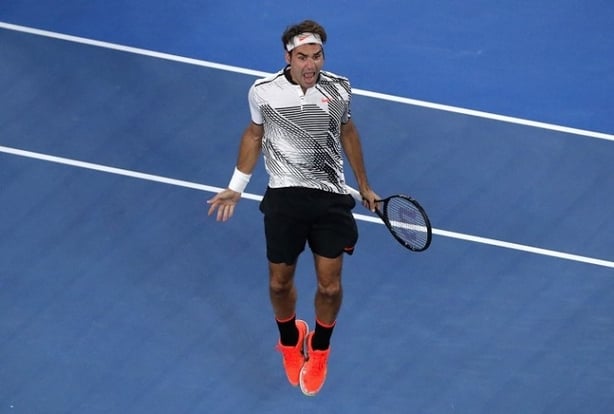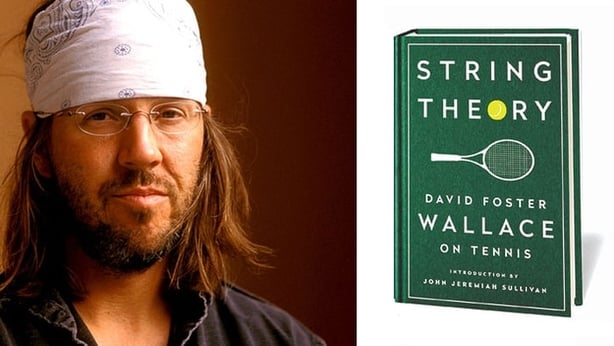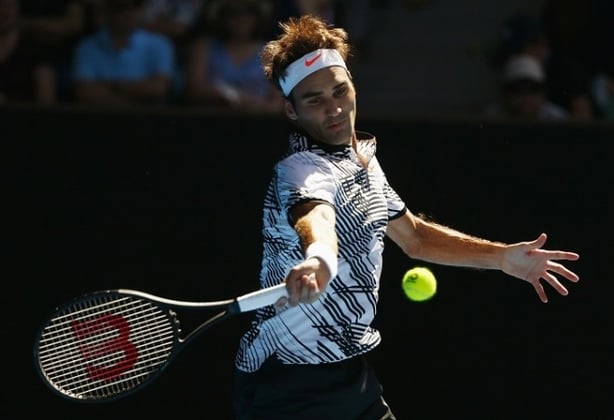After Sunday’s epic Australian Open final between Rafael Nadal and Roger Federer had come to a close, when the debate about which of them is the greatest tennis player of all-time seemed conclusively settled, and it neared midnight in Melbourne, one was reminded of an iconic piece of sports writing penned over a decade ago by author David Foster Wallace.

At the time, this was the sharpest literary mind of a generation taking the planet’s finest embodiment of athleticism and placing him, and the sport he was dominating, under a microscope so detailed and illuminating that Wallace had managed to reinvigorate longform journalism. He was a fiction writer, but he was also the keenest observer of 21st century reality.

So what exactly is a Federer moment?
“These are times, as you watch the young Swiss play, when the jaw drops and eyes protrude and sounds are made that brings spouses in from other rooms to see if you’re O.K.
“The moments are more intense if you’ve played enough tennis to understand the impossibility of what you just saw him do.”
Describing a top athlete’s beauty is next to impossible, Wallace says, before attempting to encapsulate the Federer phenomenon:
'Federer’s forehand is a great liquid whip, his backhand a one-hander that he can drive flat, load with topspin, or slice – the slice with such snap that the ball turns shapes in the air and skids on the grass to maybe ankle height…. the service motion is lithe and uneccentric, distinctive (on TV) only in a certain eel-like all-body snap at the moment of impact…

'There’s also his intelligence, his occult anticipation, his court sense, his ability to read and manipulate opponents, to mix spins and speeds, to misdirect and disguise, to use tactical foresight and peripheral vision and kinesthetic range instead of just rote pace…'
“All this is true, and yet none of it really explains anything or evokes the experience of watching this man play. Of witnessing, firsthand, the beauty and genius of his game.”
The essay goes on to explore the minutiae of tennis (a game the author played to a high-level himself as a junior, an experience which he novelised in his masterpiece Infinite Jest) covering all the angles and serving up for readers a summation of the experience of watching Roger Federer as a spectator; one that he concludes is quasi-religious.
You do not need to be a tennis aficionado to revel in the prose and analysis.
***
Since the summer of 2006, when the piece was written, Federer has amassed another ten Grand Slam titles. Last Sunday in Melbourne he defeated Nadal, his oldest nemesis, and the same player he faced in the Wimbledon Final back in July of ‘06, which is the featured match in the piece.
Wallace describes the great rivalry of these two champions before some of its finest matches and installments had been played:
'It’s the passionate machismo of southern Europe versus the intricate clinical artistry of the north. Apollo and Dionysus. Scalpel and Cleaver. Righty and southpaw. Nos. 1 and 2 in the world. Nadal, the man who’s taken the modern power-baseline game just as far as it goes, versus a man who’s transfigured that modern game, whose precision and variety are as big a deal as his pace and foot-speed, but who may be peculiarly vulnerable to, or psyched out by, that first man.'
Part of the intrigue of the action last Sunday on the Rod Laver court was the dose of nostalgia it delivered for fans of a receding era of tennis.
These two are no longer number one and number two in the world. Federer had not won a slam in five years and Nadal, having hunted and returned every tennis ball he possibly could, has a body creaking beyond his thirty years.
Both have been out injured for some time. Just a few months ago, they met to open Nadal’s tennis academy in Majorca. Only able to manage mini-tennis and a knock-up with some juniors, they joked about playing a charity match soon, for old-times sake.
Merely months later, they were both back on Centre Court in Australia, defying the odds, competing in a Grand Slam final again.
The script was perfect. The friendship they so clearly share these days was put on ice; a dispute over who was tennis’s greatest player had yet to be resolved.
And like prizefighters across the net, one powerful, one majestic, each could only rely on their respective tics and still imperious skills to help them with the next three and a half hours of tennis.
Sunday was the twilight of the greatest rivalry the sport has ever seen. As it neared midnight in Melbourne, we had witnessed, on the biggest stage, a few more Federer Moments as he defeated his old foe to win an eighteenth grand slam title in a fitting fifth and final set.
Maybe, just maybe, there’ll be a moment or two more on grass come July.
It is rare that literature takes sport seriously; David Foster Wallace’s essay is one of the best examples of such and can be read in full here.


